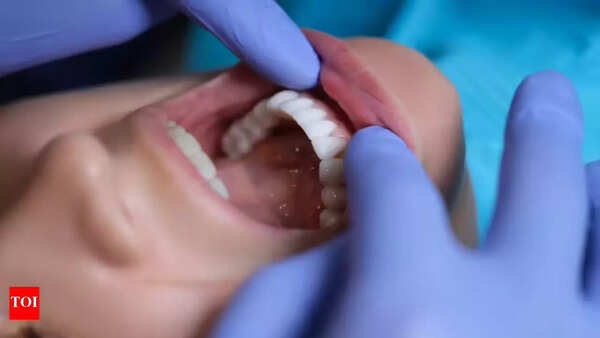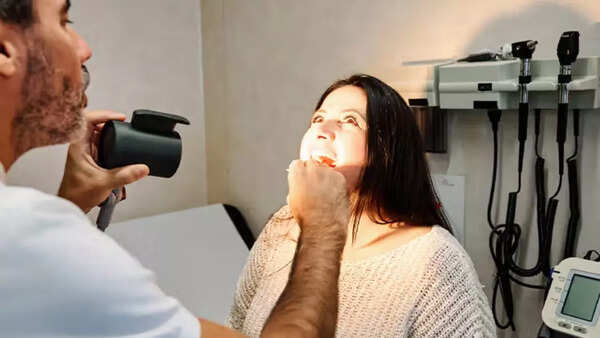Oral cancer, also known as mouth cancer, is a serious condition that develops in the tissues of the oral cavity. It can affect the lips, tongue, gums, inner cheeks, and the roof or floor of the mouth. In some instances, it may also involve the oropharynx, the area at the back of the throat. Often starting as a painless sore or patch, it can easily go unnoticed in its early stages. Regular dental checkups and self-examinations are crucial for early diagnosis. While anyone can be affected, certain lifestyle choices like tobacco and alcohol use can significantly elevate the risk.
Early detection and prompt treatment are critical for improving outcomes and survival rates. Let's delve into the signs, symptoms, and preventive measures against mouth or oral cancer.
Oral cancer is a type of head and neck cancer that originates in the tissues of the oral cavity, encompassing areas like the lips, tongue, cheeks, gums, and the floor and roof of the mouth. It can also affect the oropharynx.
The condition often manifests as a persistent sore, patch, or lump that doesn't heal and may initially be mistaken for a minor issue.
Untreated oral cancer can spread to nearby structures, including lymph nodes and other parts of the head and neck, and in advanced stages, to distant organs. Despite its potential severity, oral cancer is highly treatable when caught early.
While oral cancer typically affects individuals aged 60 and older, it can also occur in younger people. Men are statistically twice as likely to develop it compared to women. Among racial groups, white men have a higher incidence rate than Black men. Approximately 11 in 100,000 people will be diagnosed with oral cancer during their lifetime.
A significant concern is that many early symptoms are painless and subtle, leading to delayed diagnosis and treatment.

Oral cancer often presents as persistent changes in the mouth. Key indicators include:
Visible Signs:
Sensory and Functional Symptoms:
These symptoms can resemble other conditions like infections or ulcers, but their persistence should warrant concern.

Regular self-exams can aid in the early identification of unusual changes:
If you find anything unusual, consult a healthcare professional promptly.

Oral cancer can significantly impair a person’s ability to speak, chew, swallow, and even breathe, depending on the tumor’s location and size. When it affects the oropharynx, it can lead to oropharyngeal cancer, impacting the base of the tongue, soft palate, tonsils, and the back of the throat.
The oral cavity, where oral cancer typically begins, includes:
Oral cancer originates in squamous cells, the thin, flat cells lining the inside of the mouth. Mutations in these cells, often due to prolonged exposure to carcinogens, cause them to multiply uncontrollably, forming tumors.
Major risk factors include:
According to reports, about 25% of oral cancer cases occur in individuals without any of the above risk factors, underscoring the importance of regular oral screenings.
Diagnosis typically begins during routine dental or medical exams, with dentists playing a key role in early detection.
Diagnostic methods include visual and physical exams, brush biopsies, incisional biopsies, and laryngoscopy or pharyngoscopy. Once a lesion is confirmed as cancerous, additional tests are performed to determine the stage, which influences treatment options.
Oral cancer is staged using the TNM system:
Staging helps doctors determine the most effective treatment and estimate the patient’s prognosis.
While not all cases can be prevented, the risk can be significantly reduced through:
Life after oral cancer treatment varies. Some patients experience minor changes, while others face long-term impacts on speaking, chewing, and appearance. Support may be needed from reconstructive surgery, physical therapy, speech therapy, and mental health counseling. Ongoing check-ups are essential, as recurrence or secondary cancers are possible.
Newer articles
Older articles
 Evil Eye Amulet: Protective Charm or Portal to Dark Forces? A Cultural Debate
Evil Eye Amulet: Protective Charm or Portal to Dark Forces? A Cultural Debate
 Jayden Seales Fined by ICC for Provocative Gesture During Australia Test Match
Jayden Seales Fined by ICC for Provocative Gesture During Australia Test Match
 Paralympic Archer Sheetal Devi's Viral Video Shows Her Driving Car with Feet, Defying Expectations
Paralympic Archer Sheetal Devi's Viral Video Shows Her Driving Car with Feet, Defying Expectations
 Broad Slams India's Team Selection After Headingley Test Loss, Calls for Roster Tweaks at Edgbaston
Broad Slams India's Team Selection After Headingley Test Loss, Calls for Roster Tweaks at Edgbaston
 Umpire Controversy Erupts: West Indies Coach Sammy Questions Holdstock's Consistency in Barbados Test
Umpire Controversy Erupts: West Indies Coach Sammy Questions Holdstock's Consistency in Barbados Test
 Sachin Tendulkar: 1983 World Cup Win Sparked My Cricket Dream at Age 10
Sachin Tendulkar: 1983 World Cup Win Sparked My Cricket Dream at Age 10
 Jaiswal's Fielding Woes: Ex-India Star Kaif Points to Potential Cause for Dropped Catches in England Test
Jaiswal's Fielding Woes: Ex-India Star Kaif Points to Potential Cause for Dropped Catches in England Test
 Team India's England Tour: Rahul's Sleep Strategy, Coaching Rituals, and Coffee Culture Revealed
Team India's England Tour: Rahul's Sleep Strategy, Coaching Rituals, and Coffee Culture Revealed
 Suryakumar Yadav Successfully Completes Sports Hernia Surgery, Eyes Return to Cricket
Suryakumar Yadav Successfully Completes Sports Hernia Surgery, Eyes Return to Cricket
 Gujarat Cricket Set to Launch T20 League in 2025-26 Season
Gujarat Cricket Set to Launch T20 League in 2025-26 Season